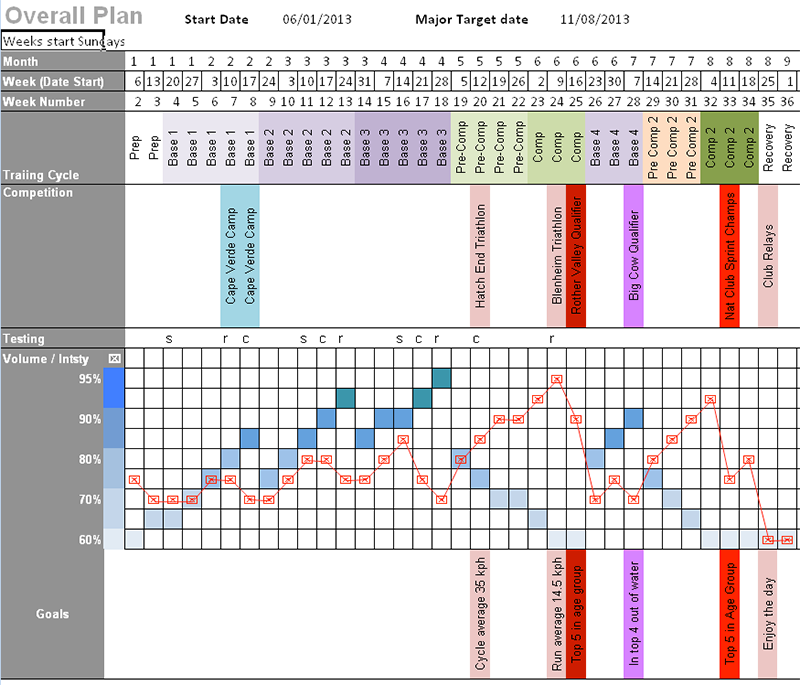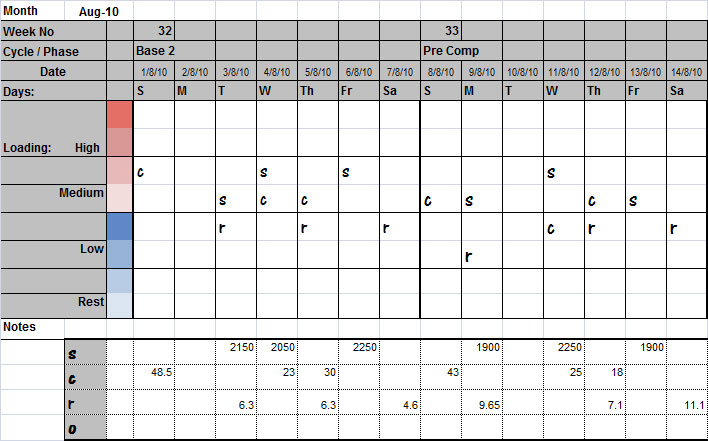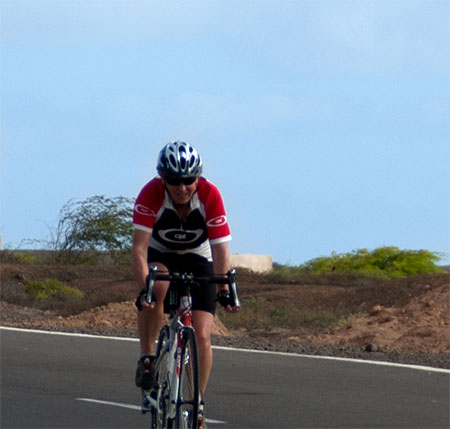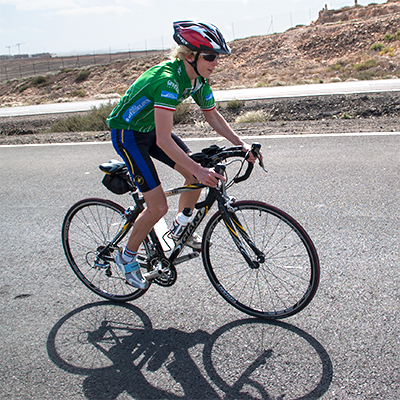Training & Planning
Let's face it, the whole purpose of this site is to help you achieve your goals through the basic principle of "Training With a Brain", so this is probably the most important section of the whole web site.
Whether you're a fitness athlete or a budding Olympian if you approach your training with common sense, don't ignore the basic elements of your sport and train with a plan, you'll get far more out of your training and a lot more enjoyment from it than by approaching it haphazardly.
Here's an age old equation often suggested by trainers and coach's all over the world:
Failing to Plan = Planning to Fail
which by and large equates pretty much to reality. This doesn't mean to say that if you don't plan you can't possibly succeed or that you can't deviate in any way from the plan you've made. What it simply suggests is that you're much more likely to successfully achieve any goal if you honestly judge where you are today and sensibly plan a step by step approach to take you to where you need to be to achieve that goal.
Any plan should incorporate a series of cycles or phases, often split into Base, Pre-Competition, Competition and Recovery, with each phase concentrating on a slightly different elements of the training mix. In addition you could add a preparation phase, where you go through specific drills and strength training, before the Base phase, but for our purposes we'll assume that this is included within the Base phase.
Setting Sensible Targets
The Base Phase
Is the time when basic fitness is gained and forms the foundation of a successful plan. The distances covered in this period are likely to be far greater than in competition but will be generally undertaken at a very slow pace. New athletes will simply use this period to gain fitness whereas competitive or improving athletes will add "Reminder Speed" sections, where they raise the pace for a short period to race pace or above, to remind their bodies of the speed they will need during competition.
Pre-Competition Phase
Allows the athlete to consolidate on their fitness gains while adding the speed element they will need in competition. Distances covered therefore generally reduce but the pace increases and you begin to reproduce the speed you need to get used to producing in competition.
Competition Phase
Is what all your training is about and will have both minor and major targets to achieve. Minor targets will give you a chance to both practice elements of your racing and test your speed for a smaller portion of racing against your main targeted goal. So it's a matter of maintaining fitness while testing your speed in competition and recovering from a previously heavy training load. As your major season goal approaches you will also taper down while maintaining and building on your speed.
Recovery Phase
In the Recovery phase it's important to give your body and mind time to recover from a hard season of training and racing. This doesn't mean you go to bed and don't get up for 4 weeks it simply means you don't train in your major sports. Often people will go skiing, mountain bike or play tennis to enjoy themselves, so participating in sport is still OK but a short break from structured training is important.

The Seasonal or Annual Plan
Shown left is an example of an overall (macro) plan covering 34 weeks and taking into account a minor and major goal (both the Big Cow Sprint races) in weeks 24 and 39. This whole plan covers 2 cycles, the first from week 5 to 24 and then next from weeks 25 to 39. Each cycle goes through Base, Pre-Competition, and Competition phases.
Volume, here indicated by the differing shades of blue, means the actual amount of training within a week, and in this plan it peaks in weeks 16 and 31 of the plan. Intensity, the measure of how hard on the body training is, is. That will be quite low during this period but peaks twice in the pre-competition and competition phases, then drops dramatically in the next base period and climbs again as we head towards the main target in week 39. As a judge of intensity it's best to use a heart rate (HR) monitor and one that is also a GPS tracker is probably your best choice. The Garmin 920XT or Fenix3 watches are ideal training companions that give a wealth of data you can view or use to analyse your training.
The plan includes some goals, to test we're on the right track to hit the overall target in our main races.
Monthly / Weekly Planning
Once we have an annual or seasonal plan and have set the intensity for each training phase we then have to break that down into monthly, weekly and daily plans within those phases. With triathlon all three sports have to be practiced so each week must all of these plus an element of rest built into the programme, as it's only after rest that you can begin to improve.
The plan to the right is from the end of the base 2 period and pre-competition phases and incorporates rest days on the first Monday and following Tuesday. From the long ride on the first Sunday the intensity drops except for swimming. There are 3 swimming, cycling and running sessions in each week and the distances of each session are shown in the grid below the daily plan.

Session Planning
Every time you do a session it should have a purpose. That purpose could be as simple as "Recovery Run" but without a purpose you won't in the end achieve a coherent and consistent training regime. After that all sessions should contain a Warm Up, Main Set and then a Cool Down. The main set can be made up of a few different types of set, all combined to achieve the purpose of the session. You should always print out your session and take it to the track or pool. The only place you might need to leave the plan at home is on the bike, for safety.
Cape Verde - The Perfect All-Season Training Venue
February / March 2020
Come training in the Cape Verde Islands - where the weather is in the 24C to 30C all year round and ocean temps are in the 20's. Roads are virtually traffic free and the locals are friendly and welcoming.
In a special triathlon training camp we assess your weaknesses and your fitness gets a real boost from consistent training in good weather.
It can be fun for the whole family too...

What They Said .....
"Many, many thanks for a quite unbelievable week....an outstanding venue (quite beautiful, friendly and warm ++); magnificent coaching (attentive, detailed, focused + challenging), and thoughtful guidance (around the island, restaurants & community). We have all really enjoyed every moment. Thanks also to Shelley & Lauren for their patience & company.
Sally & Joe
→ Read More
